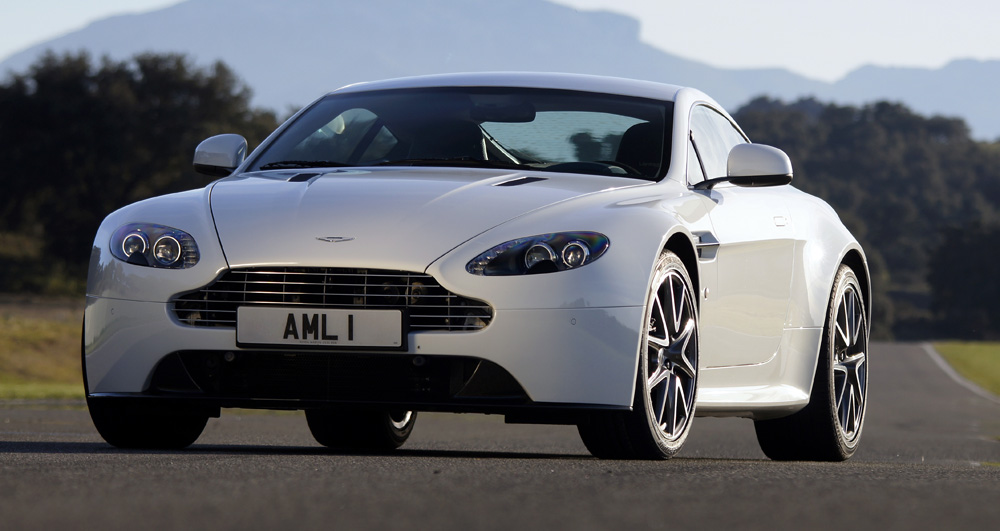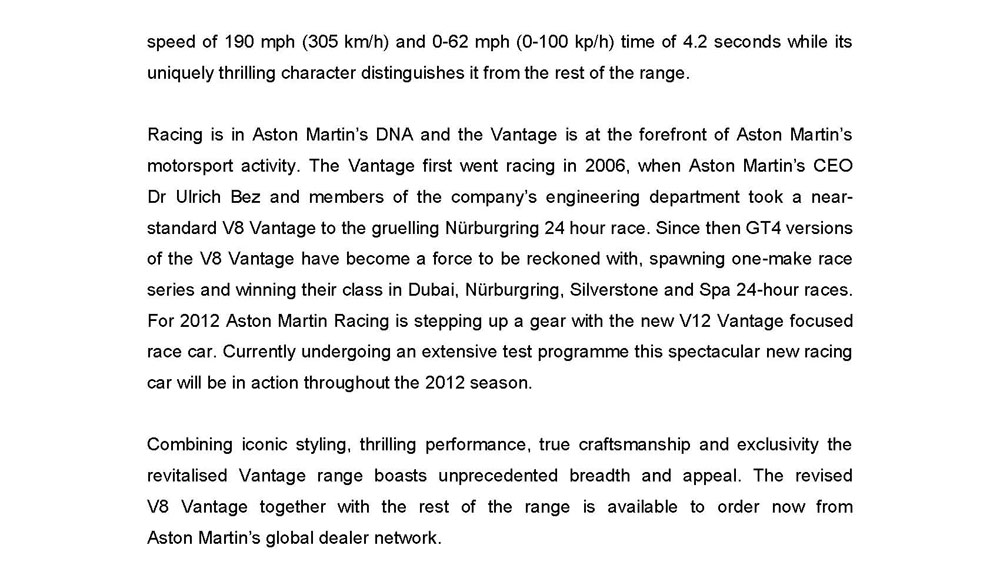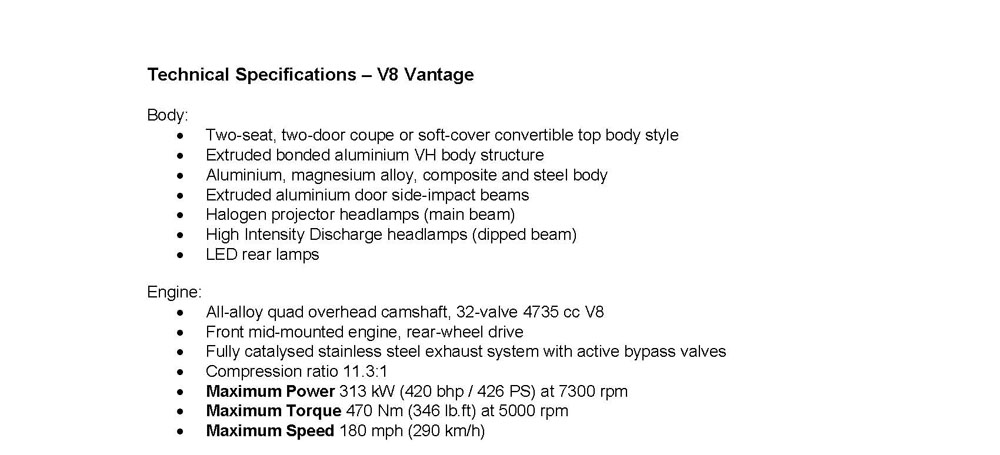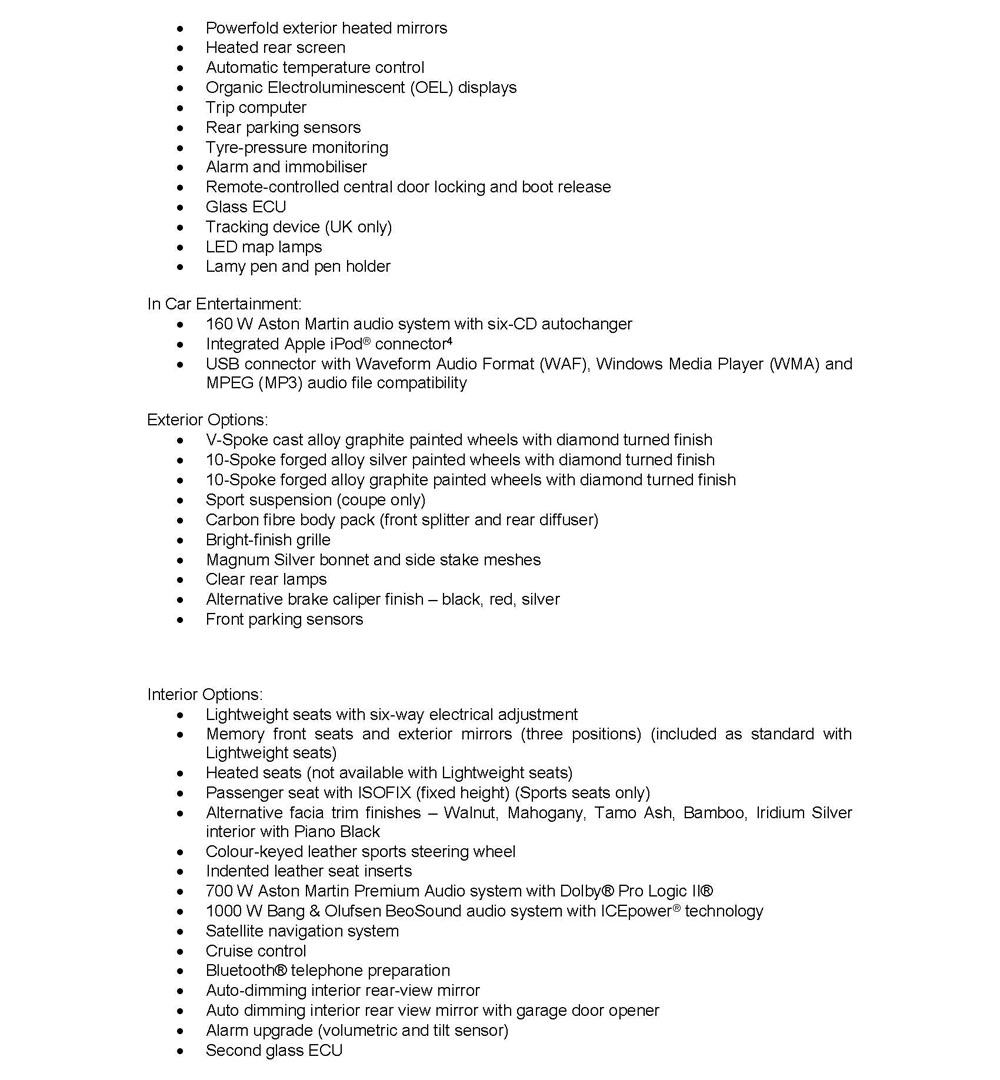
2013 Aston Martin Vantage
Aston Martin pushed sports car performance yet again with the announcement of the new V12 Vantage S. V12 Vantage S replaced the outgoing V12 Vantage in markets around the world and, with the exception of One-77, arrived as the fastest road-going Aston Martin offered at the time.
The AM28 engine in V12 Vantage S increasesd peak power to 563bhp, but alongside this is instantly accessible torque throughout the rev range. Even at 1000rpm there is an additional 70Nm of torque compared to V12 Vantage. Increased acceleration throughout the gears means a consistent performance graph.
The 573 PS Aston Martin AM28 6.0-litre V12 engine, featuring latest generation Bosch engine management, could push V12 Vantage S to 205 mph. To manage the enhanced power from AM28, Aston Martin re-engineered airflow management to improve cooling and engine performance. The carbon fibre front grille, mesh aperture and air ducts were designed and engineered to feed as much air into the radiator as possible. Maximum cooling efficiency is achieved before air exits via the carbon fibre bonnet louvres.
V12 Vantage S was honed on the track. Developed and tested from Aston Martin’s Nürburgring test centre, a near-production version of the car also completed the grueling 24hrs of Nürburgring race in both 2013 and 2014 – passing the ultimate competitive engineering test.

SPECIFICATIONS
- Engine:
5935 cc V12, All-Alloy, Quad Overhead Camshaft 48-Valve, 563 BHP @6650 RPM - Brakes:
Front: Ventilated carbon ceramic matrix discs, 398 mm diameter with six-piston monobloc calipers
Rear: Ventilated carbon ceramic matrix discs, 360 mm diameter with four-piston monobloc calipers - Performance:
Top Speed: 205 mph
0 – 60 mph: 3.7 sec - Transmission:
Rear Mid-Mounted, Seven-Speed ‘Sportshift Iii’ Automated Manual Transmission (7-speed) - Suspension:
Front: Independent double wishbones incorporating anti-dive geometry, coil springs, anti-roll bar and monotube adaptive dampers
Rear: Independent double wishbones with anti-squat and anti-lift geometry, dual-rate coil springs and monotube adaptive dampers

















